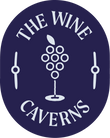Without a shadow of a doubt, one of the most popular drinks, consumed worldwide, is wine. Its rich history dates back to the early days of human civilization and has even long been used in religious ceremonies, as medicine (at least that’d be our excuse anyway)... and as an inspiration for some of the greatest works of art. Within this blog, we’ll take a look at some of the lesser-known facts about wine and their connections to wine culture.
Here are 161 interesting fun facts about wine and a little bit about the culture, type, and history of wine from around the world. Why 161 you ask? Well two hundreds is a big number, and thinking of interesting facts is no easy task, but we happen to know an awful lot about wine and with a little bit of knowledge and a whole lot of research, we’ve found these interesting facts from some fantastic online sources. So if you’re a wine lover, we’re sure that you’re going to love this blog.
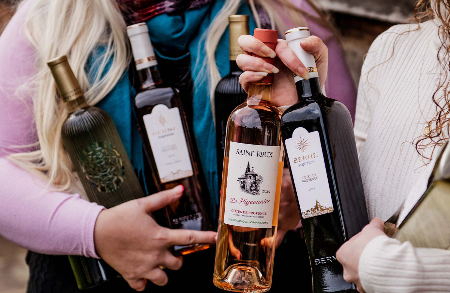
162 amazing facts about wine
20 Fascinating wine facts from our history.
The history of wine is incredibly old and understandably only some important historical facts are mentioned below. So let’s dive in.
1. Production of wine in Georgia dates back to about 6000 BC, and this period also yields the first evidence of wine in the region.
2. Possibly as early as the fifth century, the Romans planted grapes in the northeastern French area now known as Champagne.
3. At least metaphorically, the vine's history in America began with the mediaeval Norsemen. Every American is familiar with the tale of Leif Ericsson and his voyage from Greenland to an uncharted nation in the west in the year 1001.
4. When The Finsbury Distilling Company was established in the City of London in 1740, ginger wine was first produced in England. In accordance with the Gin Act 1751, the business, like other distillers, was obligated to establish a retail network.
5. In ancient Rome, it was traditional to bump glasses with a "cheers" to ensure that no one was attempting to poison the other (bumping glasses spill the drink from one cup to another). Even earlier, in Ancient Greece, it was customary for the host to drink the first glass of wine served to visitors to demonstrate that he had no malign intent.
6. In the eleventh century BCE, the Phoenicians dispersed wine over the Mediterranean, giving it to the ancient Greeks, who in turn encouraged the Romans to become fervent wine drinkers and cultivate grapes all over their empire.
7. As the Folkians established Masalia in the sixth century B.C., they covered at least 2600 years of French wine history, but viticulture may have begun far earlier.
8. Ancient China, which is considered to have existed as early as 7000 BC, founded the first evidence of a fermented drink made from grape and rice that was related to wine.
9. The Gauls are thought to have developed the first wine storage barrels, and the Syrians developed the first wine glass bottles.
10. Mosaics of Dionysos, the deity of wine, were found near the city of Paphos, which dates back to the Hellenistic period.
11. A noteworthy occurrence is the notorious "Judgement of Paris" of 1976. In a blind test, Californian wines actually triumphed over their French cousins, sparking debate and elevating American wine to a global level gift.
12. In Italy, it is believed that the Romans began to industrialise wine production, with the use of slave labour in the vineyards.
13. According to Greek philosopher Plato, alcohol should only be consumed moderately between the ages of 18 and 30. He felt that wine rejuvenated older people, so once he turned 40, it would be open season. He advocated for the prohibition of wine use by anybody under the age of eighteen.
14. Prince Charles has an Aston Martin that runs on wine-based biofuel. When Charles was 21 years old, Queen Elizabeth gifted him the car. Then it was modified in 2008 so that it could run on aged wine.
15. The world's biggest and oldest wine cellar was discovered during the excavation of a 3700-year-old Canaanite palace in northern Israel.
16. The oldest iterations of Chianti were white wines, and their history extends back to at least the 13th century.
17. King Tut (or Tutan Kahmun), a king of Ancient Egypt, was said to have been buried with 26 pitchers of red wine… and for clarity (as if it were needed) Red wine was said to have been his favourite wine.
18. Hammurabi, the sixth Amorite king of the Old Babylonian Empire (c. 1792–c. 1750 BC), enacted a number of laws that are commonly referred to as the Hammurabi's Code. The ultimate punishment for dishonest wine vendors was to drown in a river.
19. The Speyer wine bottle, discovered in 1867 in Rhineland-Palatinate, Germany, near Speyer, is possibly the oldest surviving preserved good wine bottle.
20. The first bottle of South African wine was created in Cape Town by the country's founder and governor Jan van Riebeeck in 1659.
14 Lovely facts on different wine locations.
Wine is available and consumed just about everywhere in the world these days. So here are some great facts about various regions and what they mean to the culture of wine today.
1. Italy, Spain and France are the three largest wine-producing nations globally.
2. There are 267 American Viticulture Areas (AVAs) across 34 different states as of August 2022.
3. Most wine labels in Europe will tell you where the wine was made, but in the New World, you'll often just see the grape type listed.
4. Only wines that are cultivated, made, and bottled in the Champagne area of France are eligible to be named as authentic Champagne.
5. In Spain, a drink called Kalimotxo or Calimocho is made by combining red wine with Coke or similar soft drinks.
6. At least 80% of Italians in 1880 made their income from the flourishing wine business.
7. Every single state in the US (of which there are 50) has at least one active winery.
8. Italy's largest and most extensively grown grape variety is sangiovese.
9. The Vatican City has the highest per capita wine consumption rate in the world (That’s a lot of holy communions).
10. Wines from Europe and the Middle East are classified as "Old World," whereas wines from the Americas, Australasia, Africa, and Asia are classified as "New World."
11. New Zealand's hallmark grape is Sauvignon blanc.
12. On French wine labels, the appellation refers to the legally specified area from whence the wine comes.
13. In the Italian region of Abruzzo, the town of Caldari di Ortona began offering a free wine fountain a few years ago, and it has since become a major tourist attraction.
14. There is a spa in Japan called Hakone Kowakien Yunessun hot springs spa, where clients may have a bath in a variety of alcoholic and non alcoholic drinks, including tea, coffee, and wine.
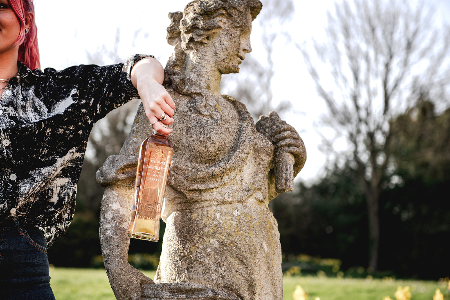
11 Wonderful wine facts about various cultures and religions.
We respect that religion and culture are very much a sensitive and sentimental part of every day society, as such we look not to offend any religious or cultural beliefs with the facts below, but merely to educate people from all backgrounds about the interesting ways that wine has culturally resonated with us all throughout history.
1. Wine had a significant role in the development of ancient Greek society and culture, and Dionysus was worshipped as the grape harvest's patron deity.
2. Beer and wine were consumed and presented to the gods during ceremonies and festivals in the religion of the Ancient Egyptians. In Egyptian tombs, alcohol was also kept with the mummified deceased in order to pass with them from one life to the next.
3. Women were not allowed to consume alcohol in ancient Rome. In fact so barbaric were the laws of those times that it became legal for a husband to murder his wife if he were to discover her drinking wine.
4. Spiced medicinal sake known as Toso ((屠蘇) or o-toso) is typically consumed during Japanese New Year festivities. Toso drinks in an effort to rid oneself of the ailments from the previous year and to prolong his life. It has been a traditional component of Japanese New Year's osechi cuisine for generations. It is said that "if one person drinks this his family will not fall ill, and if the whole family is to drink this, then no one in the village will fall ill."
5. According to Islamic views, alcohol-containing beverages, including wine, are completely prohibited.
They ask you, ˹O Prophet˺ about intoxicants and gambling. Say, “There is great evil in both, as well as some benefit for people—but the evil outweighs the benefit.
The Holy Quran; Surah: Al-Baqarah; 2:219
6. In Hinduism, there is a more tentative approach regarding the consumption of alcohol. Drinking wine and indeed alcohol in general is likely fine, however it is more about the quantity of consumption and the control over doing so, stated below.
"Hinduism is generally accepting of moderate alcohol use, although disapproving of heavy drinking" JD Fowler: Hinduism: Beliefs and practices(Book) - Google Scholar
7. In Christianity, wine is very much aligned to religious culture. Wine is used during a holy ceremony known as the Eucharist, which derives from the Gospel story of the Last Supper.
8. Churches and monasteries in the Middle Ages were actually major producers of wine.
9. Alcohol use is usually prohibited in Buddhism since it violates the fifth of the Five Precepts.
10. In Judaism, wine is regarded as a substance of importance and is used in religious rituals. Additionally, it is acceptable to consume alcoholic drinks in general.
11. Alcohol consumption in any form is prohibited in Jainism and Sikhism, and there are no exceptions for social or occasional drinking.
19 Spectacular grape varieties and vineyards.
Thousands of grapes are cultivated every year to create a vast array of all different wines. Let’s take a look at some wine facts that focus on the varieties of grapes and vineyards.
1. Over 10,000 different grape types are known to exist today.
2. The Cabernet Sauvignon grape variety is the most extensively cultivated grape worldwide.
3. Chardonnay grapes are used to make Chablis.
4. The soil type, climate, and other environmental factors that have an impact on the grapevine itself, are all combined to form a wine's terroir.
5. Dark-skinned grapes are used to make rosé wine, although only a little amount of skin contact occurs.
6. The world's largest producer of Chardonnay grapes is France. 25% of the world's Chardonnay is produced there. France's Burgundy region is well recognised for growing Chardonnay grapes.
7. Wines that are natural and organic are produced in nonsynthetic vineyards. In their vineyards, the winemakers who create these wines refrain from using pesticides and herbicides.
8. Vine life spans often exceed 50 years.
9. The grape known as Zinfandel is identical to the grape known as Primitivo.
10. Non-vintage indicates that the wine is a blending of grape varieties from several years, and the abbreviation NV stands for that.
11. Must is the juice that is primarily extracted from wine grapes.
12. Pinot Noir has gained a reputation for revealing the nuances of particular vineyards.
13. Wine is believed to usually taste better when grown on poorer soil (less fertile).
14. The most significant wine grape grown in Australia is syrah/shiraz, known for its robust, sometimes chocolate-like flavour.
15. The main grape of Châteauneuf-du-Pape is grenache noir.
16. In order to protect them from pests, particularly Phylloxera, vines are sometimes grafted onto pre-existing roots before being planted.
17. Throughout history, grapes have been the most widely cultivated fruit for industrial purposes.
18. Both red and white grapes may be used to make white wine.
19. The widely renowned Nebbiolo grapes are used to make Barolo.
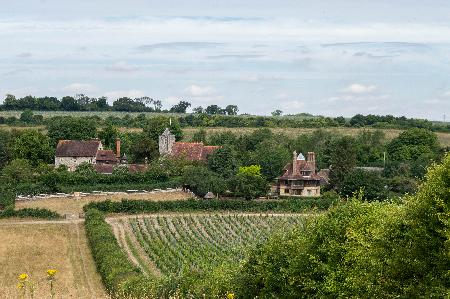
27 Fantastic facts on winemaking and storing process.
Winemaking is a lengthy and costly endeavour that requires both time and money. But for those of us without the time or facilities to make wine to a professional standard, we thought we’d share some facts on the wine production process and storage systems.
1. Tartrate crystals, a harmless sediment that resembles diamonds that form when white wine is kept in the cold, are sometimes seen in white wines.
2. Yeast distinguishes wine from fruit juice. It is the most vital part of most of the winemaking/fermenting process.
3. Numerous wines are not vegetarian or vegan. To reduce tannin astringency and clear out sediment, a fining agent such as egg or fish bladder is often utilised, even today.
4. The ideal serving temperature for sparkling and light-bodied white wines is believed to be between 38° and 45° F.
5. An average of 600 grapes, or 1.27 kg, are included in one bottle of wine.
6. Champagne obtains its bubbles in the bottle. When Champagne is bottled, it is still; however, when yeast and sugar are added to the mixture, they interact over a period of at least 15 months to produce carbon dioxide, giving us the beautiful variety of sparkling Champagne’s we’ve all come to adore.
7. The bitter substance known as tannins is found in the grape skin, seed, and stem.
8. To withstand the pressure caused by carbonation, champagne bottles are built of thicker glass.
9. You may find the word "Cuvée" on champagne bottles. What this says is that the wine is a blend.
10. Picking grapes and producing wine are both considered to be parts of the vintage process in winemaking. A vintage wine is one that was produced using only or mostly grapes that were cultivated and harvested in a particular specified year.
11. Carbon dioxide is also responsible for the bubbles in sparkling wine.
12. The ideal serving temperature for red wine is believed to be 62° to 68° F.
13. Wine may be chilled more quickly by increasing the surface area of contact between the bottle and the cold by adding water to an ice bucket.
14. The term "co-ferment" refers to the process in which the grapes are fermented together rather than separately, whereas the term "blend" refers to the process in which the grapes are fermented separately and then mixed together thereafter.
15. Variants of the Vitis Vinifera species make up the bulk of grapevines used in wine production.
16. Herbs, spices, and even honey were sometimes added to Greek wines.
17. Serving temperatures for white wine should be cooler than red wine at around a range of 49° to 55° F.
18. "Chaptalization" refers to the process of adding sugar to wines in colder climates to increase their alcohol level. It is named after Jean-Antoine Chaptal, a Napoleonic official.
19. Wines from warmer places often have more sugar and are stronger than those from colder ones, which tend to be more acidic because grapes create sugar as they age.
20. During the wine-making process, Malolatic fermentation transforms astringent malic acid into softer, more pleasant lactic acid.
21. The heaviness of a wine in your mouth is referred to as its full-bodied. Tannins, sugar, acidity, and other ingredients give wine its body.
22. A more aged wine has a more subdued "bouquet" in comparison to a fresh wine's "aroma."
23. Brewer's yeast, also known as saccharomyces cerevisiae, is the kind of yeast utilised for fermentation.
24. Keep your wine bottle upright since this might cause the cork to dry out, shrink, and perhaps let oxygen or air into the bottle.
25. The wine was bottled on the vineyard's estate if the label states "Mis en Bouteille au Domaine." Some say that this retains freshness and fruitiness.
26. Over 400 different types of oak trees are utilised to make wine barrels. These trees are around 170 years old on average.
27. Most wines are made to be consumed within a year or two rather than to be aged, despite vintage wines increasing significantly in value.
28 Astonishing facts on various wine types.
You might be surprised to learn just how many different types of wine are readily available. Only a few of the well-known and lesser-known wine varieties are listed below.
1. Dessert wines are high sugar and alcoholic wines that are generally served with dessert, sometimes known as "pudding wines" in the UK.
2. Chianti Classico is a kind of wine created from grapes that are cultivated in the region's historic core, as indicated by the word "Classico" in its name.
3. Wine and cocaine were once combined to make Coca wine, an alcoholic beverage. One well-known brand was Vin Mariani (also called Mariani wine), which was created in 1863 by entrepreneur and French-Corsican chemist Angelo Mariani.
4. White wine or Champagne will freeze more quickly if ice and salt are combined in a bucket.
5. Skin-contact wines, often known as orange wines, get their colour from the fermentation and ageing of white grapes on their skins.
6. Ice wine is a dessert wine.
7. Shaoxing wine or yellow wine, is a traditional Chinese wine prepared in Shaoxing, in the Zhejiang province of eastern China, by fermenting glutinous rice, water, and yeast derived from wheat.
8. The wine is recognised as biodynamic by the "Demeter" label.
9. Sulfites tend to be lower in red wines compared to white wines.
10. Red wines from Bordeaux called claret.
11. Red wines that are not too old provide more health benefits than older red wines.
12. Spiced wine, also known as mulled wine, is a hot or warm served alcoholic beverage often prepared with red wine, different mulling spices, and occasionally raisins. It is a customary libation throughout the winter, particularly around Christmas.
13. Plonk is a shabby wine. It definitely must be avoided.
14. Portuguese wine is referred to as port wine. Although it is also available in dry, semi-dry, and white types, it is primarily a sugary red wine that is often consumed with dessert.
15. Wines like sherry and port are fortified, meaning they contain more alcohol.
16. Fruit wines are fermented alcoholic drinks that aren't created with grapes but instead a range of other ingredients. Fruits, flowers, and herbs other than grapes may lend unique flavours to the wine.
17. The wine sold in containers with pictures of animals on the label is referred to as "Critter Wine."
18. The quantity of wine in a "magnum" is the same as that in two regular bottles.
19. The sap of several palm tree species, including the palmyra, date palm, and coconut palm, is used to make palm wine, also known by a number of other names in the region. It is kind of fruit wine.
20. Red wines lighten in hue as they aged.
21. Some of the most well-known dessert wines, like Château d'Yquem from Sauternes, Seewinkel from Austria, and Tokaji Asz from Tokaj-Hegyalja in Hungary, are created from grapes that have Botrytis cinerea on them.
22. Wine that has been naturally flavoured with herbs, spices, fruit, or other ingredients is known as an Aromatised wine. According to EU regulation, Council Regulation (EEC) No 1601/91, an Aromatised wine must have a minimum of 14.5% by volume of alcohol and a maximum of 22% by volume of alcohol.
23. Despite being a white wine, Pinot gris has a pinkish-blue-gray skin.
24. When white wines are allowed to age for longer, they get darker in colour.
25. The high presence of tartaric acid in grape juice contributes to the stability and complete absence of bacteria in wine.
26. A fermented mixture of ginger, raisins, sugar, and yeast is used to make ginger wine, a fortified wine that is often fortified by blending brandy with it. The Whisky Mac cocktail relies heavily on this ingredient.
27. By immersing the grape skins in a mass of crushed grapes, Rosé wine acquires its pink hue.
29. White wine actually has fewer antioxidants than red wine.
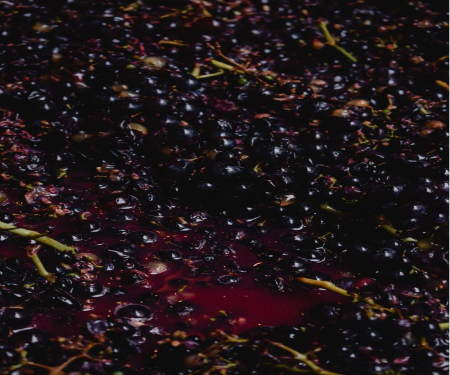
10 Best facts on wine taste and food pairing.
To improve the dining experience, various dishes are paired with wines in a process known as wine and food pairing or matching. Whenever possible, try to match your wine with a suitable food.
1. Wine loses some of its sweetness when it is chilled. However, if red wine becomes too heated, it loses its delicious taste.
2. The first stage in tasting wine is to examine the colour and opacity.
3. Wine will seem more harsh and less fruity when served alongside sugary foods.
4. Pinot Noir is widely considered to be "the classic grape of red burgundy," and it produces wines with bold berry flavours.
5. Generally a wine will smell more than it tastes.
6. Richer, heavier foods , suit richer, heavier wines when paired together. Red wine is often paired with red meat. Lighter wines are paired with lighter dishes.
7. Fish and chicken are often paired with white wines. Similarly, choosing a sweet wine if you want to drink wine with dessert, is often the best way to compliment the pallet.
8. Damascenone, a fragrance component found in grapes, is what gives many wines their floral aromas.
9. Acidic wines go well with a variety of meat dishes.
10. When wine is aged in barrels, oak provides buttery vanilla flavours to the wine.
13 Interesting wine facts on health
Research often tells us that Wine isn’t good for our health and whilst that can be said of excessive consumption of any alcohol based product, we thought we’d focus in on some very interesting and indeed positive health related facts about wine.
1. The father of medicine, Greek physician Hippocrates (470–370 BCE), realised that wine had antibacterial properties and advised using it as a wound treatment.
2. Drinking too much alcohol over a long period of time may harm your heart's muscles and raise your risk of a stroke. Additionally, excessive wine intake may lead to weight gain, which raises the risk of heart disease.
3. Red wine is helpful for heart health because it includes resveratrol, an antioxidant that is largely found in grape skin.
4. Most wine is devoid of cholesterol and fat. "Guilt-free"is a common term often used to refer to this.
5. Compared to red wines, white wines are less likely to trigger a hangover (reason: whites have less alcohol and tannins).
6. There is a phobia known as oenophobia, which refers to a deep hatred, fear, and anxiety for wine.
7. Wine pleasure may be impacted by your DNA. Taste receptors are encoded by 25 genes in the human body. According to studies, those who have two copies of the most sensitive TASR38 gene are more likely to find alcohol to be bitter and unappealing.
8. White wine may have up to 160 calories in a typical glass, whereas a typical glass of dry red wine has around 110. Where wine that is sweeter generally contains more calories irrespective of its grapes of origin.
9. According to recent research, women who consume one or two glasses of wine each day have better sex than those who do not consume any alcohol at all.
10. Despite red wines being generally associated with a high calorie count, the calories in sweeter white wines (such as Moscato) are often higher than those in typical red wines.
11. It has been shown that drinking wine in moderation lowers dementia risk and slows cognitive ageing.
12. The blood alcohol content (BAC) measurement is used to determine the amount of alcohol in the blood (BAC).
13. According to two recent studies, the polyphenols in chocolate and wine (as well as both!) improve blood flow and oxygenation to the brain, which enhances cognitive function. As you get older, the impact becomes much more advantageous, since the blood flow to the brain naturally decreases. So if that’s no excuse enough to look forward to old age, we don’t know what is!
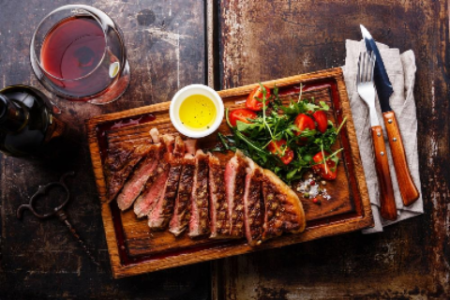
20 Unbelievable wine trivia and additional facts.
Here are some stats and facts that might blow your mind.
1. 1.39 billion litres of wine were made available for consumption in the UK in 2021 by HM Revenue and Customs.
2. National ‘Drink Wine Day’ is February 18th - though we like to practice celebrating this on various occasions throughout the calendar year.
3. The typical American consumes little more than 2.3 gallons of wine annually.
4. The official study of wine is called oenology.
5. The 3rd Thursday of every November is the official release date for Beaujolais Nouveau.
6. The world's most expensive wine bottle, a Romanee-Conti 1945, sold for an eye-watering $558,000 at an auction held by Sotheby's.
7. A sommelier is a skilled and experienced wine specialist who often tends to work in a high-end or fine restaurant. Sommeliers are in charge of all aspects of the wine service, from developing the restaurant's wine selection to providing pairing information to customers during floor service.
8. There are 11 distinct wine bottle sizes in all.
9. A standard case of wine generally contains 12 bottles.
10. Approximately 720 bottles of wine can be made from 1 tonne of grapes.
11. A car's tyre is said to hold less pressure than a champagne bottle.
12. According to Utah law, you are not permitted to swallow wine while tasting it.
13. The Nebuchadnezzar, named after an ancient ruler, is the largest wine bottle in the world. Twenty standard bottles' worth of liquid may be contained in this one large bottle (now there’s a drink we can get on board with).
14. The volume of a standard wine bottle is 750 ml.
15. One regular sized bottle of wine is said to contain around 2.5 to 3 pounds of grapes.
16. According to Statista, the most wine consumption in the twenty-first century occurred in 2007 with 25 billion litres drank globally. And in the following year, 2008, this volume once again topped 25 billion litres. In 2021, 23.6 billion litres of wine will be drunk globally.
17. Many Mouthwash brands, available today, contain more alcohol than wine does.
18. When flying with his family, Michael Jackson asked that his wine be served in Diet Coke cans. He didn't want his children to witness him drinking.
19. The 2003 Spectacle du Monde tasting had 50 blind-tasted Champagnes, and Sweden-born Richard Juhlin was able to correctly identify 43 of them. He is the author of various publications, including "A Scent of Champagne," which was published on November 1, 2013, and lists and describes 8000 Champagnes.
20. One more, less important but certainly mind blowing fact: you ARE meant to pronounce the "t" in "Moët & Chandon" Champagne.
Conclusion
In summary, this article was written for the true wine lovers among us, who want to know more about where it all began and the tapestry that wine has painted through history as we know it (or in this case, potentially didn’t already know it). We hope you enjoyed our collection of interesting facts about wine and it’s origins. If you’ve enjoyed this article, please feel free to share it with friends or family. Also, if you have any other interesting wine facts or you feel we’ve missed something and you would like to share with us, please feel free to contact us at any time. Thanks for reading!
